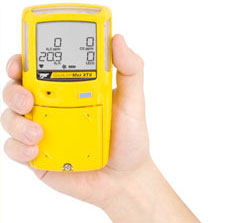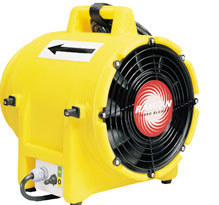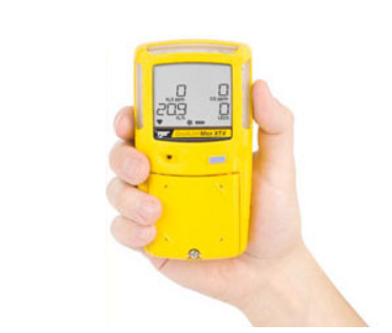A Confined Space Ventilation Primer
Confined spaces can be a pain to ventilate, and every location you work in will be a little different. As a result, it can be difficult to find your bearings when you're first starting out. We're well aware of this, so we've put together this basic guide to help you complete your first ventilation jobs safely.
 1. What are we up against?
1. What are we up against?
Start every job this way: Assess the safety of your confined space by using a multi-gas detector with a pump and a remote test probe. These two features will allow you to test all levels of your space without having to enter the space. Remote, multi-level tests are always necessary because different gases collect in different zones. Methane, for example, rises to the ceiling, while carbon monoxide mixes with oxygen in the middle of a space, and hydrogen sulfide sits low on the floor. A single-layer test could give you an incomplete picture, and that could spell disaster for you and your team. So test near the bottom of the space, in the middle, and near the top with equal thoroughness.
 2. Ventilate
2. Ventilate
Most confined spaces can be aired out with grounded axial fans, but if your gas detector finds explosive agents you'll need an intrinsically safe blower to prevent explosions and fires.
Aside from your blower, you'll need to find the right kind of venting and ducting for your job. Supply ventilation (blowing air in rather than sucking it out) is the most effective method. However, as easy as it is, it doesn't eliminate common ducting problems. Too little ducting can keep you from completely venting dangerous atmospheres. Longer ducting usually works better, though you'll need to make sure that bad air doesn't recirculate into your space. Do this by keeping your fan upwind from the confined space's entryway or by using extra ducting on the intake side of your fan to draw air at a safe distance.
When you're ready to do your job, take a second to figure out how long you'll need to blow your fan. You can get a rough estimate by dividing the volume of your confined space by your fan's airflow rating. So, if your fan is rated to push 1600 cubic feet per minute (CFM) and you have a room with 800 cubic feet, dividing 800 by 1600 will tell you about how long you'll need to clear the air in the room once (800/1600 = 0.5, or about half a minute). This is just a rough estimate, though; definitely let a few complete cycles of fresh air flush your space before you move on.
 3. Is my space safe to enter?
3. Is my space safe to enter?
After you've flushed your space a few times, run another multi-layer test with your gas detector. Once it gives you the all clear, you should carefully enter, taking your monitor along with you. If it rings at any time, leave immediately and try to figure out what went wrong. Did you use enough ducting? Is it possible that bad air got recycled into your space? If you're stumped, you should definitely consult an expert. With that said, feel free to give us a call.
Recent Posts
-
Customizing Gas Detectors: Tailoring Solutions to Fit Your Unique Requirements
In today’s diverse industrial landscape, a one-size-fits-all approach to safety simply doesn’t cu …Jul 3rd 2024 -
10 Ways to Prevent Wildfires
You can prevent wildfires by extinguishing flames before you leave the worksite. Avoid practicing …Jul 1st 2024 -
ANSI/ISEA 138 Safety Gloves: Ensuring Hand Protection
The human hand is an anatomical masterpiece and arguably the greatest tool attached to our bodies …Jun 25th 2024





